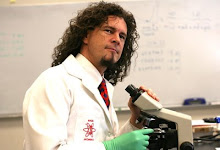The rational base ten metric system changes units every count of ten. The
There are advantages for translation of units and measurement accuracy with the metric system. Ten millimeters equals one centimeter; and if you can’t quite get the measurement to fit on your ruler, you can add another decimal place. The piece is not quite 3.4 cm, but is more than 3.3 cm, then it can be more accurately 3.38 cm.
Cutting fractions in half is also easy, merely double the denominator; half of 1/16 inch is 1/32 inch. The numbers are all base 2 and base 4, easy to get a feel for the pattern. It is strangely simpler to express 1/32” than .03125”.
I have been thinking about numbers in the natural world. While the base 2 system sometimes occurs in nature, it is the fundamental of our digital system; the absolute of on or off, one or zero. The base 4 system is fundamental to all life.
The fundamental molecule to all life is the self replicating DNA. It is composed of only 4 chemicals, which then yield only 64 different combinations. These then attach together in enormous strings to make the super complex variation we see from dandelion to influenza to elephant. The whole thing is constructed on the basis of only these 4 chemicals: adenine, cytosine, guanine, and thymine.
There is unintended symmetry between the archaic architectural system and the natural chemical world.
There-Should-Still-Be-Flowers-In-the-Future





No comments:
Post a Comment